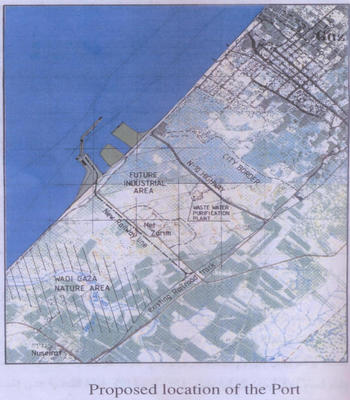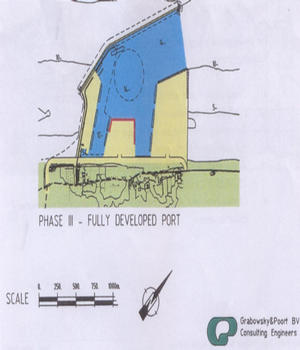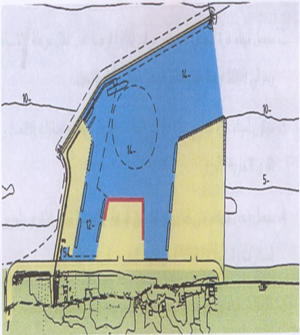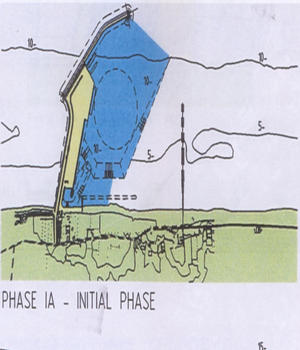My Catalog
A Study of Gaza Seaport Berthing Facilities Using Simulation
SUMMARY
A queuing model of the logistic activities related to the arrival, berthing, and departure processes of ships at Gaza Seaport in Palestine are presented in this thesis. Non standard service stations, time-dependent priority mechanism, and complex resource allocation policies prevent the use of analytical approaches to the solution. By adopting the process approach, a simulation model for the above queuing model has been developed for Gaza Seaport. This requires a limited effort when using graphical objects of the Arena program for discrete- event simulation. Good validation of results against response measures on a real system are obtained using aggregated data related to finite time horizon. Steady state simulation results illustrate the use of the model.
INTRODUCTION
This thesis is concerned mainly with designing the seaport activity using discrete event system simulation, for Gaza Seaport. Implement all phases involved in generating the simulation model system for Gaza Seaport, while benefits gained by applying it could easily be sensed and measured. Application the model of Gaza seaport, which is considered as an important gate to both cargo and passengers. In fact most of Palestine's imports enter through this port which increases its economical importance. This led us to take a closer look at the work progress at this port. Unfortunately, we have found that the manual system applied now is extremely inefficient. It is considered to be a very primitive system, considering the importance of Gaza seaport, and substantial improvements could be achieved if a computer system is used instead. Therefore our goal in the thesis is to propose a full port activity simulation for Gaza seaport by using a computer program, Arena, which simulates, retrieves and processes data reliably in order to overcome the numerous disadvantages of the manual system. In addition, we will state the improvements that our system offers to the port management system.
OBJECTIVES OF THE THESIS
The main objective of this thesis is to apply the simulation concepts and design simulation activity, for Gaza Seaport by using Arena software. The study will establish an improved system for Gaza Seaport considering the number of berths for each type of ships and the number of cranes used in port operation. In order to enhance loading and unloading operation, to be completed without tardiness and with the least cycle time.
THE SIMULATION REQUIREMENT FOR DEVELOPMENT OF SEAPORT
This thesis will focus on the emerging requirements for container terminal users. In effect there are many tools and commercial simulation example focusing on container terminals, however most of them are just a computational support devoted to the estimation of single operation (i.e. calculation of total ship time based on planning of operations) [1]. Therefore, the terminal operation involves many interactions, operating with several cranes on several ships concurrently, and probably at the same time they complete import and export operation with trucks and freight trains [2].
The commercial packages normally support just operative short terminal planning considering each task as a stand alone procedure; for instance providing analysis and estimation related to a ship unloading/loading without considering interactions with other ship at the quay. Obviously in the real system the interactions are the critical issues; some of the principal aspects involve:
· interference among yard cranes (i.e. transtainers)
· interference among dock cranes (i.e. portainers)
· interference among connections units (i.e. straddle carriers)
· interference among containers
· Containers blocked by others on the ship
· Containers blocked by others on the yard
· access problems (i.e. containers vs. constackers)
The complexity of the real port terminal always requires nonlinear modeling, so the resulting models are not suitable for effects superimposition [3]. Due to these reasons, isolated planning normally provides very approximated results and requires to be compensated by the large experience of human planners. If we consider the organizational structure of a container terminal, as easily summarized in figure (1). It is evident that many subjects are actively involved in the management with very peculiar targets. The simulation can be very useful for these actors however in order to multiply his effectiveness is necessary to create full scope simulators [4].
The interoperability issue in effect can downsize the development times and costs and at the same time improve the verification, validation and especially accreditation process of the simulator. This last issue is very important in order to transform the software tool in an effective decision support [5]. The graphic and animation must be considered as a mandatory requirement to guarantee final user is consistency and correctness of the results both the during development and operation management [6].
The verification, validation and accreditation (VV&A), of an object oriented simulator or of a federation of simulator is a complex issue. In any case the final user needs to be involved in several tests and to receive complete and detailed documentation including:
- · Simulation Effectiveness Boundary Ranges
- · Confidence of Simulation Results
- · Statistical Analysis of Stochastic Factors
- · Independent Variable Description
- · Target function Description
- · User Manual
- · Formal Description of Conceptual Model
- · Statistical Validation & Verification
- · Case Study Testing Report.
WHAT SEAPORT SIMULATOR CAN DO?
A simulation program generates four output files. All of these files have standard [18].
1. File containing data of storage and yard usage, StorData.out,
2. File containing data of terminal equipment usage, ResData.out,
3. File containing data of simulated vehicles usage, Vehcall.out,
4. File containing some additional information, results.txt.
Files one to three contain more than ten specific factors. These factors are related to simulated parts of port (storage, crane, quay, etc.) at the constant time interval. Below we can see the list of the most important factors contained in the reports, in example week-reports.
Set of output files factor
- File StorData.out
Factors in:
- number of shipments in
- mean of number of shipments in
- standard deviation of number of shipments in
- variance of number of shipments in
- time weighted mean of number of shipments in
- time weighted standard deviation of number of shipments in
- time weighted variance of number of shipments in
- file ResData.out
Factors in:
- Number of times number of units of resource allocated was updated
- mean of number of units of resource allocated
- Variance of number of units of resource allocated
- Standard deviation of number of units of resource allocated
- Time weighted mean of number of units of resource allocated
- Time weighted variance of number of units of resource allocated
- Time weighted standard deviation of number of units of resource allocated
- Number of customers, which had to wait
- mean of queue length
- Variance of queue length
- Standard deviation of queue length
- Time weighted mean of queue length.
3. File Vehcall.out
Factors in:
§ DWT
§ Draught on arrival at the port
§ Draught on departure from the port.
§ Arrival time at the pilot on the approaches
§ Anchoring times on the approaches(if it takes place)
§ Arrival time off berth
§ Arrival time at the berth
§ Start of unberthing procedures
§ Departure time from the berth
§ Departure time after leaving the pilot on the approaches
§ Time used for clearing of the vessel and crew.
§ Vehicle turnaround time



